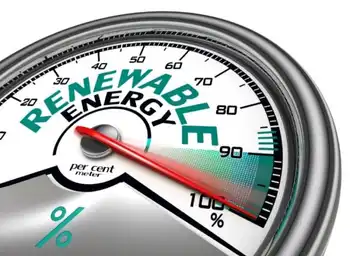Is green procurement right policy for Ontario?
Wal-Mart Inc. and Federal Express are using solar heating systems manufactured by Conserval Engineering Inc. Sheraton Hotels selected EnviroTower Inc. for its chemical-free cooling tower technology. Meanwhile, several U.S. utilities are deploying energy-management software from Lixar SRS Inc. All three cleantech ventures are from Toronto.
If "made-in-Ontario" clean technologies are good enough for the above-mentioned customers located outside the province, then why not purchase these same energy-saving, environment-friendly technologies here at home?
That's the question Céline Bak, a partner with management consultancy Russell-Mitchell Group, believes the Ontario government should be asking as it tries to position the province as a leader in green technology development and deployment.
Bak spearheaded a report released last month that, for the first time, came up with an inventory of clean technology companies in the province. A total of 110 ventures were identified, nearly half of them based in the Greater Toronto Area. They're mostly small private companies with little, if any, revenues. Many have commercial product and limited sales, but are lacking the capital to support breakout growth.
To its credit, the Ontario government has done a decent job of funding demonstration projects that give some of these companies a chance to showcase their products. Bak says the one-off demonstrations are helpful, but government can play a much more valuable role as procurer of these technologies.
"It's moving from government as funder of demonstration projects to government as smart procurer," she says.
But Bak goes one step further. She's proposing that all annual energy savings from the large-scale deployment of these technologies in government buildings, schools, hospitals and other public assets be set aside in an Ontario Clean Technology Commercialization Fund.
The money in such a fund, which could easily expand to hundreds of millions of dollars, could be reinvested through an independent third party in earlier-stage Ontario cleantech companies hungry for venture capital to support product commercialization and growth.
"This proposal is, in effect, a ‘local savings and loans’ strategy," according to a one-page brief Bak prepared with Kevin Jones at the Ontario Centre for Environmental Technology Advancement. But the two are under no illusion it will be an easy undertaking. "Implementing this proposal would require significant political will."
Got that right. Still, it's a compelling funding model that deserves serious consideration.
One obvious concern any politician would have relates to the idea of governments picking winners. The public has rightly demanded that procurement be done in an open, transparent manner that promotes competition and seeks the greatest value for every dollar of taxpayers' money. There's also the protectionist aspect of such a policy and the possible retaliation from other jurisdictions.
At the same time, there's a general appreciation that small, innovative companies often don't have enough capital or sophistication to participate in traditional procurement processes. Indeed, some U.S. jurisdictions have small-business laws that allow a certain amount of procurement from local companies with revenues below, say, $50 million a year. "We've been talking about that law in Canada for ages," says Bak.
So, let's assume it's a path worth taking. How, then, do we do it?
The first step, argues Bak, is a comprehensive assessment of the clean technology companies in Ontario and an independent validation of what they have to offer. Which ones are unique and have no obvious competitors? In which product categories are more than one Ontario-based company capable of doing the job? The government would also have to identify and prioritize projects to get a clear sense of its needs.
If a local company meets a need and has no obvious competitor, then direct procurement may be justified. If this company has one or more local competitors, then a locally focused competitive tender is required. If no local company meets the need, then a traditional procurement process is used.
"It's an idea that requires some work," Bak admits.
There's no denying that using the massive purchasing power of government to support local innovation could go a long way toward putting Ontario cleantech companies on the global map. Likewise, reinvesting the government's resulting energy savings in early-stage companies is a sensible way to close the loop.
Is it a good idea? Or is it begging for trouble? Please, share your thoughts.
Related News

Finland Investigates Russian Ship After Electricity Cable Damage
MOSCOW - In December 2024, Finland launched an investigation into a ship allegedly linked to Russia’s “shadow fleet” following a series of incidents involving damage to undersea cables. The investigation has raised significant concerns in Finland and across Europe, as it suggests possible sabotage or other intentional acts related to the disruption of vital communication and energy infrastructure in the Baltic Sea region. This article explores the key details of the investigation, the role of Russia’s shadow fleet, and the broader geopolitical implications of this event.
The "Shadow Fleet" and Its Role
The term “shadow fleet” refers to a collection…




